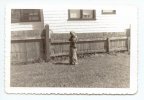BrianB43
Gold Member
- Joined
- Feb 5, 2010
- Messages
- 124
This #57 SFO is a split spring whittler. It is a convenient watchpocket-sized, comfortable to use, knife. But I'm curious about the jigging. The handles are called Pioneer Jigged Bone. Does the word Pioneer refer to the colour (yes, I'm Canadian) of the bone or does it refer to the jigging pattern or is it just a made up description? I have looked through all the GECs with a Pioneer label and I can't find any handles that look like my 57.
Thanks, Brian


Thanks, Brian





